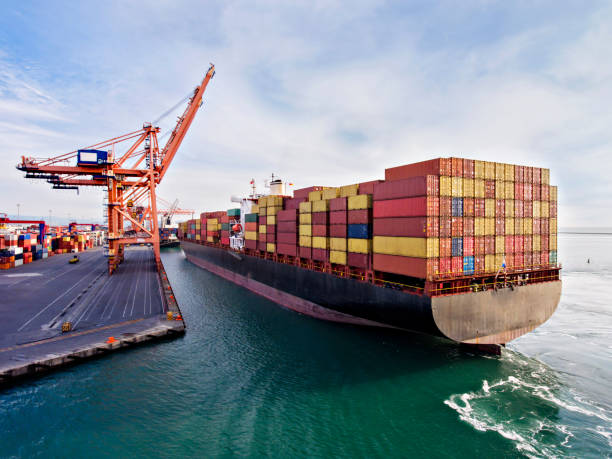Freight shipping is critical in enabling businesses to transport goods efficiently and reliably. However, regarding shipping freight between Adelaide and Canberra, businesses often need help with various challenges impacting their supply chain and overall operations. This blog will explore some common issues encountered during this shipping route and offer practical solutions and strategies to overcome them.
By implementing these recommendations, businesses can enhance their freight shipping processes, improve supply chain visibility, and ensure smooth operations from Adelaide to Canberra.
Managing Inventory
Managing inventory effectively is crucial when shipping freight over long distances. Balancing optimal stock levels is a challenge businesses must address to meet customer demand while avoiding excess inventory.
Solution: Implementing effective inventory management practices is essential—Utilise inventory forecasting techniques to anticipate demand and optimise stock levels. Analyse historical data, market trends, and seasonal fluctuations to make informed inventory decisions. Employ inventory management software that enables real-time tracking and monitoring of stock levels. With accurate and up-to-date information, businesses can make data-driven decisions, reducing the risk of stockouts or excess inventory.
Optimising Delivery Schedules
Coordinating delivery schedules can be challenging, especially when freighting between distant Adelaide and Canberra locations. Delays or inefficiencies in delivery can impact customer satisfaction and overall business performance.
Solution: Develop efficient delivery schedules by considering transportation modes, route optimisation, and estimated transit times. Collaborate with reliable logistics partners who have experience in the Adelaide-Canberra shipping route.
Leverage technology solutions that offer real-time tracking and visibility to monitor shipments and adjust schedules accordingly. Businesses can optimise routes, streamline processes, and ensure on-time deliveries, enhancing customer satisfaction using advanced logistics software.
Mitigating Risks
Freight shipping involves inherent risks, such as damage to goods, theft, or accidents. These risks can lead to financial losses and delays in delivery.
Solution: Mitigate risks by investing in appropriate insurance coverage to protect goods during transit. Conduct thorough risk assessments to identify potential vulnerabilities in the shipping process. Implement robust packaging and handling procedures to minimise the likelihood of damage.
Provide proper training to staff involved in handling and loading goods. Additionally, due diligence should be exercised when selecting transportation partners, ensuring they have proper safety measures and a strong track record in freight shipping.
Enhancing Supply Chain Visibility
Lack of visibility across the supply chain can hinder effective freight shipping management. Inadequate information about the location and status of shipments can lead to delays and poor decision-making.
Solution: Use supply chain visibility tools and technologies to track shipments in real-time. Implement systems that provide end-to-end visibility, allowing you to monitor the movement of goods, identify bottlenecks, and proactively address any issues. Collaborate closely with logistics partners to ensure seamless information sharing and transparency.
By implementing robust tracking systems, businesses can gain real-time insights into their shipments, enabling them to make informed decisions, communicate accurate delivery information to customers, and effectively manage potential disruptions.
Resilience in the Face of Disruptions
Unexpected disruptions, such as natural disasters, labour strikes, or regulatory changes, can significantly impact freight shipping operations.
Solution: Develop a robust contingency plan that outlines alternative routes, backup suppliers, and communication protocols during disruption. Maintain open lines of communication with logistics partners and customers, informing them of any potential delays or disruptions.
Diversify your transportation options to reduce dependence on a single mode or carrier, enhancing your ability to navigate unexpected challenges. Regularly review and update the contingency plan to address emerging risks and maintain business continuity.
Managing Customs and Regulatory Compliance
Navigating customs and regulatory requirements can be complex and time-consuming, leading to delays and potential penalties if not handled correctly.
Solution: Stay up-to-date with customs regulations and compliance requirements for Adelaide and Canberra—partner with experienced customs brokers with expertise in the specific route and can ensure smooth customs clearance.
They have maintained accurate documentation and provided the necessary information promptly to expedite the clearance process. By proactively managing customs and regulatory compliance, businesses can minimise delays and avoid unnecessary penalties.
Ensuring Equipment Availability
The availability of appropriate equipment, such as trucks, containers, or pallets, can pose challenges when shipping freight over long distances.
Solution: Collaborate with reliable logistics partners with a well-maintained equipment fleet and ample capacity—plan shipments to secure the necessary equipment and avoid last-minute shortages. Consider alternative equipment options, such as intermodal transportation, which combines multiple modes (e.g., road and rail), ensuring equipment availability and optimising cost and efficiency.
Cost Management
Managing shipping costs and ensuring profitability while maintaining competitive pricing can continuously challenge businesses.
Solution: Analyse shipping costs holistically, including transportation, fuel, handling, and customs fees. Optimise shipment consolidation to maximise container or truckload utilisation. Negotiate competitive rates with logistics providers by leveraging long-term partnerships and increasing shipment volumes.
Implement cost management strategies, such as optimising routes, reducing empty backhauls, and exploring cost-saving technologies like freight rate calculators or automated invoice reconciliation systems.
Communication and Collaboration
Ineffective communication and collaboration among stakeholders can lead to miscommunication, delays, and errors in freight shipping operations.
Solution: Foster open lines of communication and establish clear communication channels with logistics partners, suppliers, and customers. Utilise digital platforms and collaboration tools to facilitate real-time information sharing, track progress, and address any issues promptly.
Maintain regular communication to inform all parties of shipment status, schedule changes, or potential disruptions. Effective communication and collaboration are crucial for streamlining operations and ensuring smooth freight shipping.
Conclusion
Freight shipping from Adelaide to Canberra involves various challenges that businesses must address to ensure smooth operations and customer satisfaction. Businesses can overcome these challenges by managing inventory effectively, optimising delivery schedules, mitigating risks, enhancing supply chain visibility, and building resilience.
With Green Earth Logistics comprehensive approach and proactive strategies, businesses can navigate the complexities of this shipping route, optimise their supply chain, and drive success in their freight shipping endeavours.

